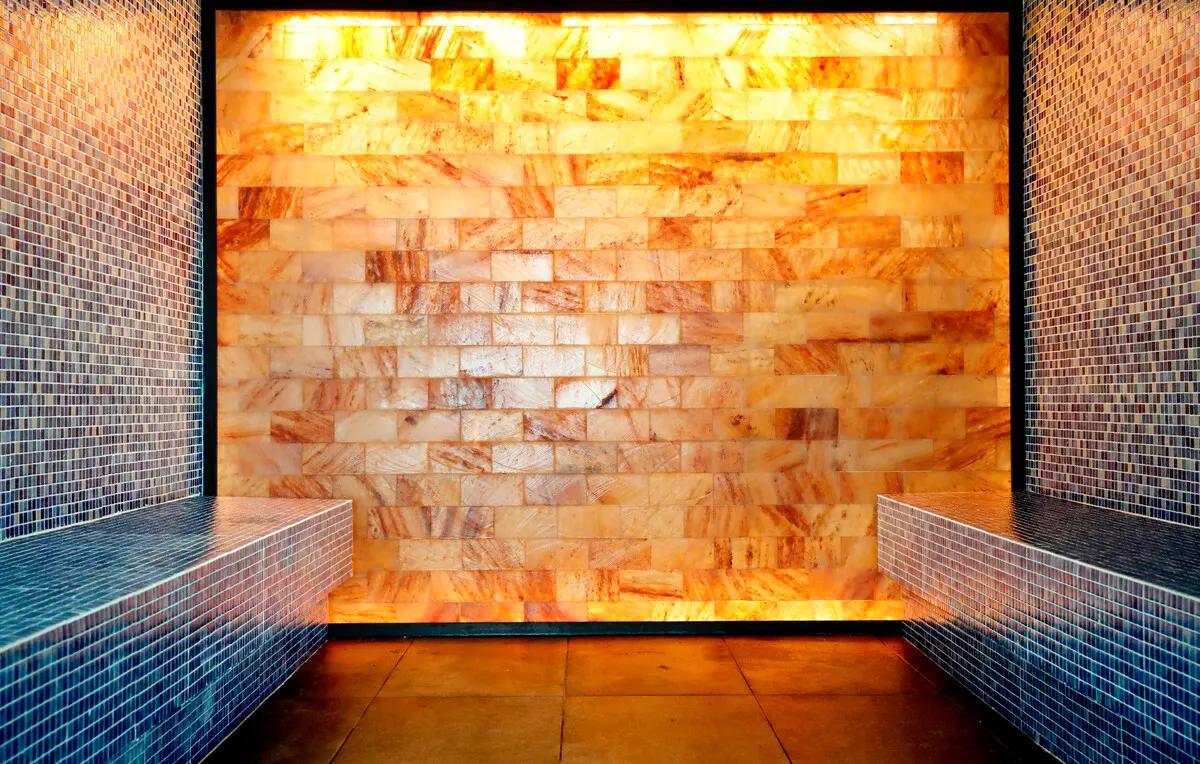Salt saunas represent a trend in wellness services in spas, hotels, resorts, sports clubs and wellness centres, both for the health benefits they offer as well as for their striking appearance which adds a level of attractiveness to any environment they are placed in. They are a modern and innovative solution to expand a business’ wellness services and to attract potential users who are interested in wellness experiences.
Dive deeper with the eBook
What are salt saunas?
They can either be called salt saunas or salt cabins. They consist of spaces that have been made with Himalayan salt bricks which have been placed on one or more walls of the sauna to create a salt wall. They include benches or couches on which you can rest, as well as soft and relaxing lighting. In the centre of the sauna or cabin is where the salt generator or halogenator is usually installed.
The temperature in salt saunas can be anything between 48 and 75ºC, while the relative humidity is between 20% and 50%. These conditions favour the natural process of salt ionization.
The treatment and wellness experience using salt solutions is what is known as halotherapy. It is a complementary therapy which is totally natural. Users breathe in the saline air with its mineral origin and this provides important benefits, particularly to people suffering with respiratory (asthma, bronchitis, cystic fibrosis, sinusitis and seasonal allergies), dermatological, muscular and stress issues.
Differences between a salt sauna and a salt cave
In the wellness sector there is a wide variety of services and solutions, some of which are very similar. Confusion between salt saunas and salt caves is normal. The latter are normally structures built on natural formations which use microparticles of mineral salt from the same rock which is 100% natural.
The effects are practically the same. In addition to offering a relaxing and peaceful space, they help people with respiratory and dermatological pathologies.
However, salt saunas or salt cabins are specifically designed so that all the elements, including the Himalayan salt, focus on this objective, with the added advantage that they can be custom developed for a wellness centre, hotel, spa or sports club.

Why they are currently so popular
In reality, the different wellness services that are now available have been enjoying a steady boom in recent years. The development of Finnish saunas, outdoor saunas and services such as emotional showers, have gained special importance in a time where people are looking to take greater care of the body and mind.
Salt saunas are currently seeing a rise in popularity for the numerous benefits they offer to the people who decide to try them:
- The benefits from absorbing small saline microparticles (from the Himalayan salt) through the skin and respiratory tract.
- They help to neutralise electromagnetic frequencies.
- It is an effective treatment against insomnia, stress and fatigue.
- They help reduce free radicals.
- They remove impurities from the skin, strengthen the immune system, oxygenate the blood, relieve allergies and reduce headaches.
The duration of the sessions will depend on each particular case, but usually sessions last for 50-60 minutes for adults and 30-40 minutes for children.
Design recommendations for salt saunas
Salt saunas are made up from a whole set of elements focused on being able to enjoy their benefits.
In addition to the structural, temperature and humidity conditions, the design also takes on a special importance regarding the attractiveness of the wellness space.
Quality materials such as spruce wood and panoramic glass fronts make its design stand out, adding to the overall visual appeal and encouraging those who use the sauna to relax.
Aromatherapy, lighting behind the walls and soft music are also used to make the whole experience both physically and emotionally beneficial.
At Fluidra we design salt saunas and cabins all over the world, adapting to the aesthetic and functional objectives of each wellness centre.
